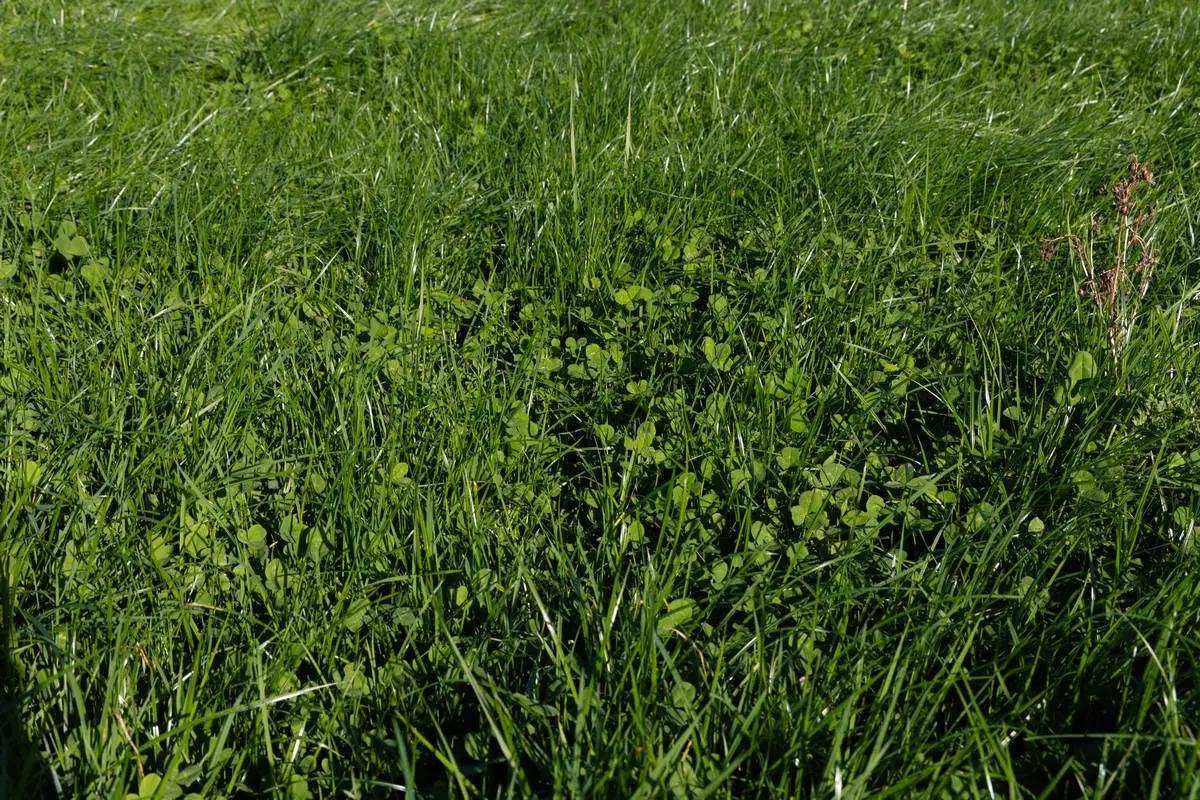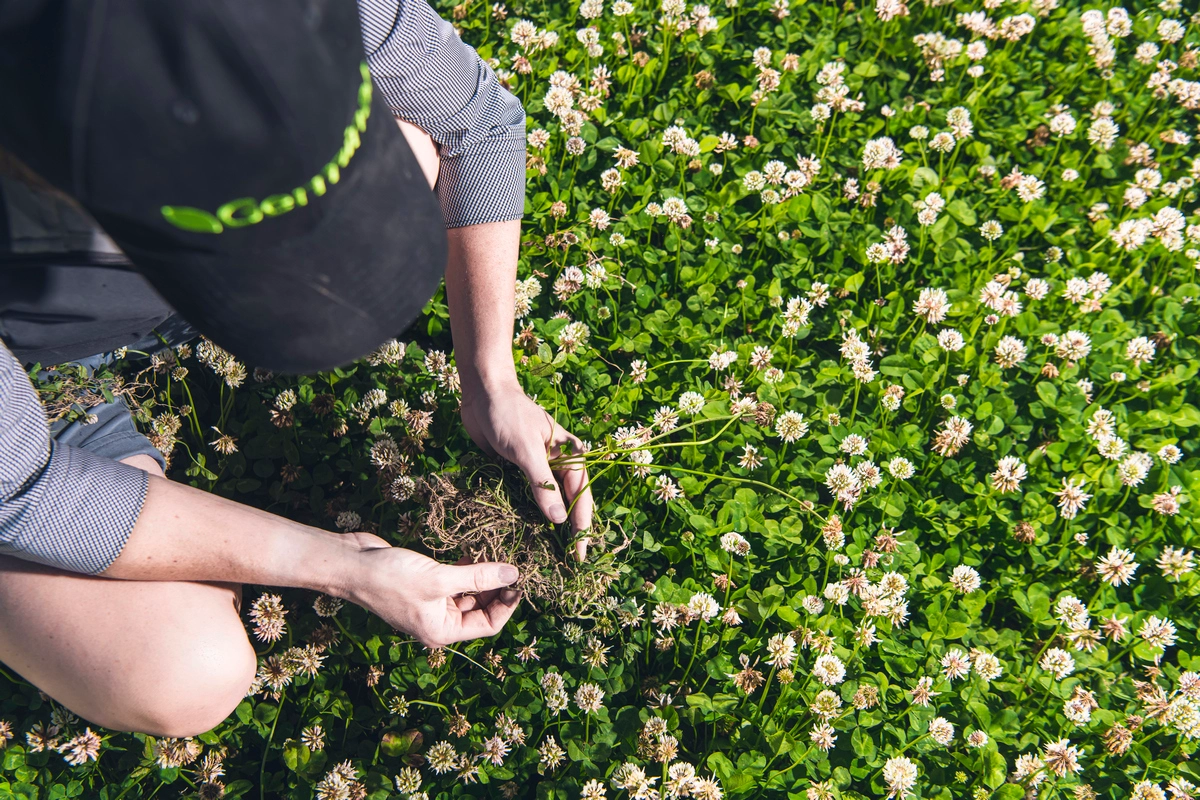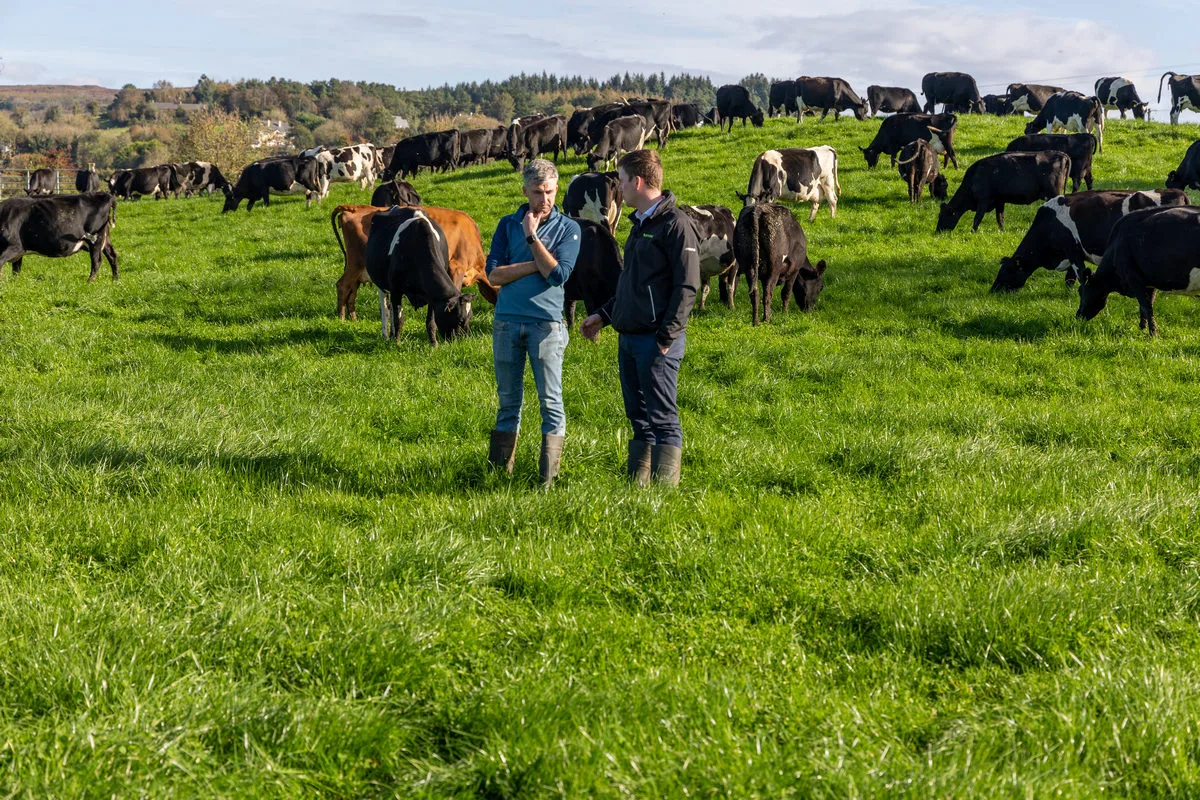Clover has become an integral part of Diarmaid Fitzgerald’s grassland management and is helping him grow 14 tonnes of grass per hectare while almost halving nitrogen inputs.
The Teagasc Overall Grassland Farmer of the Year 2022 winner began to establish clover on his Co. Clare farm three years ago.
Farm facts
- Cratloe, Co. Clare
- Milking 145 crossbred, spring-calving cows
- Calving for 11 weeks from February
- Farming 66 hectares (ha) (163 acres)
- R2s reared at another farm.
- 85% of the herd calved in the first six weeks of the breeding period
- Stocking rate: 2.5 cows overall
- Grew 14 t of grass in 2022
- Has grown 12 t up to 26 October
- In 2022, produced 469 kg of milk solids/cow
- Average cow mature weight: 515 kg
- Fed 300 kg of concentrate/cow (up to 26 October)
- Target is to feed 500 kg this season
Good results and rising fertiliser prices have seen Diarmaid fast-track clover inclusion with two-thirds of the farm now in clover.
“I’m trying to incorporate clover on the whole farm. This year, we have reseeded 22 acres (9 ha),” he says. “Last year’s [2022] fertiliser price was the game-changer. If that reseed doesn’t get any nitrogen, the saving in fertiliser will almost pay for the full reseed,” he adds.
Diarmaid was first encouraged to start incorporating clover into his grassland leys after following the clover trials at Teagasc’s research centre, Moorepark Farm, in Clonakilty.
He received advice on establishing and grazing the legume from Germinal’s Technical Director, Mary McEvoy, and Rob Prenderville, of Teagasc’s Signpost Programme.
Clover establishment
Red and white clover have been established on the Cratloe-based farm using a mix of reseeding and overseeding (click here for our full reseeding guide).

“In 2021, we oversowed 15 acres and it did well and then in 2022 we oversowed and it didn’t take so I haven’t done any since,” he admits.
Full reseed vs oversowing
“I think a full-reseed is the most efficient. Oversowing is hit-and-miss and there are lots of things you must get right for it to work. Rain afterwards is crucial, and you must graze it at covers of 1,300-1,400 kg of DM/ha for three to four rounds to allow the light into it,” says Diarmaid.
He believes oversowing is more effective on newer, 3-4-year leys compared to older, denser grassland pastures to give the clover a chance to compete with more vigorous grass. Where clover has been oversown it was sown at a higher rate of 4 kg compared to full reseeds which had half this amount.
“When oversowing, you are competing with grass, so you must go with 4 kg to give it a chance,” advises Diarmaid.
Germinal grass and clover varieties deliver
Diarmaid has used AberHerald white clover to give him early spring growth, as well as AberAce and AberLasting, which is a world-first hybrid clover from Germinal’s DoubleRoot range. Capable of surviving extreme cold and drought conditions, DoubleRoot clovers are bred with greater persistency than standard clovers.

Meanwhile, the red clover Bonus is used alongside the tetraploid, high sugar ryegrass AberGain and the diploid AberChoice. Both are leading varieties on the Teagasc Pasture Profit Index and come from Germinal’s Aber High Sugar Grass range of varieties that can reduce livestock emissions while increasing meat and milk production.
Going forward, he wants to use AberClaret red clover for its increased persistency compared to other clovers.
Reseeding is carried out exclusively in spring. The worst performing fields are earmarked for reseeding with yields recorded using Pasture Base.
“I have always reseeded in the spring; the reason being, when you take out a paddock you are without it for 8-10 weeks but when it comes back into the rotation it will easily yield 12 t,” says Diarmaid, who likes to capture this benefit during peak grazing months.
Diarmaid’s five-step reseeding strategy
- First step: Spray off the existing sward and grazes it for 4-5 days.
- Second step: Always applies lime and ensures the pH is 6.5 or above. Clover does not like low-pH soils.
- Third step: Min-tills or direct-drills the seed.
- Fourth step: Apply two bags of 10.10.20 fertiliser and rolls the field.
- Fifth step: Uses the pull test and if the crop is ready, before grazing it lightly 8-9 weeks after sowing to help it tiller.
Grassland management
The grazing platform totals 66 ha and some 25 paddocks with silage taken when there is surplus growth. Cows are turned out to grass as they calve and Diarmaid aims to start his second grazing rotation around 8 April. Milking cows typically spend 36 hours in each paddock, entering grass covers of 2,800 kg DM/ha.
“I try to do more than 10 rounds throughout the year and close up paddocks around the 10th to 15th of November.”
Since establishing clover, he has had to adapt his grassland management to accommodate the change in the seasonal growth pattern.
He explains: “You don’t get quite as much growth in the spring, and you can’t close the farm with high overall covers [of grass]. You must leave less to ensure the clover doesn’t get smothered out in the winter.”
Diarmaid targets closing covers of 1,200 kg in autumn and opening covers of 1,600 kg in spring.
Bloat prevention
Making tweaks to prevent bloat has also been necessary. Cows are given 12-hour paddocks to prevent them from over-indulging on clover which can cause bloat. Diarmaid also uses anti-bloat oil in the water troughs, which prevents gases from forming in the rumen.
“I haven’t started using breakfast breaks [2-3-hour allocations] yet as I feel 12-hour paddocks are working fine,” he explains.
“So far, all the bloat I have seen has been with red clover. I have paddocks that have received no nitrogen for the whole year, and they are growing 13-14 t [of dry matter per ha], but they can be dangerous with bloat.”
Diarmaid says red clover leys require strategic application of artificial fertiliser.
“I’m going to go back to applying some nitrogen in the spring to bring on the grass [and prevent red clover becoming too strong],” he adds.
Benefits of clover
Incorporating clover into grassland swards has helped reduce inorganic nitrogen applications from 250 kg/ha in 2020 to 130 kg/ha this year [2023]. With protected urea currently costing €560/t that has saved him €4,480 this year alone.

“I would say using clover is fundamental for any grassland system because of the fertiliser price and from an environmental point of view. Whether we like it or not, we are going to have to make changes.”
He believes he is better placed to deal with Ireland’s nitrates derogation, which was recently reduced to 220 kg/ha, and hopes it will make his business more resilient moving forward.
In the next 12 months, he plans to rent an additional 35 acres and contract rear calves to lower his stocking rate. He will also sow more red clover to become compliant with the new rules.
“The aim by 2025 is to have 100% of the farm in clover and growing 14 t of grass from 100 kg of chemical,” says Diarmaid.
Get grass and clover advice
Want advice on using clover in your livestock farming system? Simply contact our experts.
